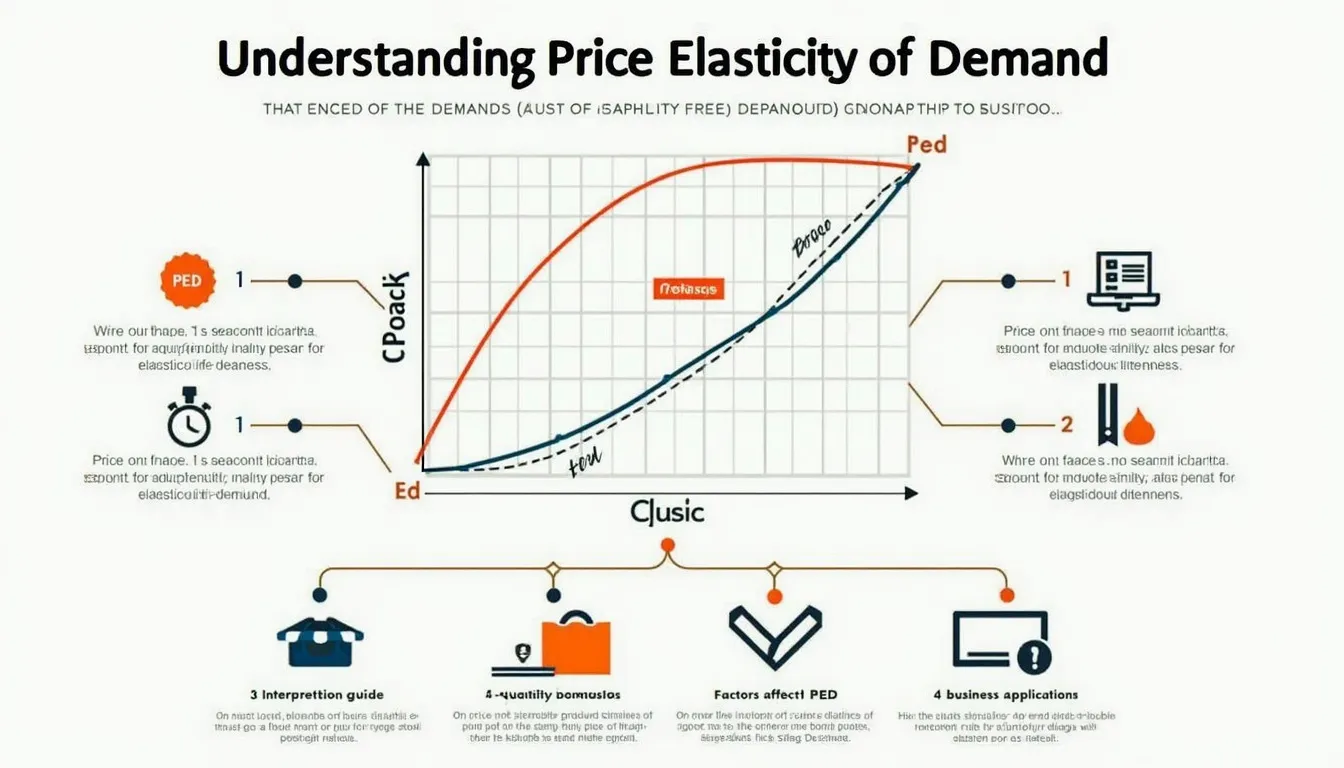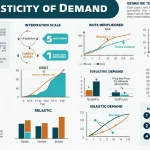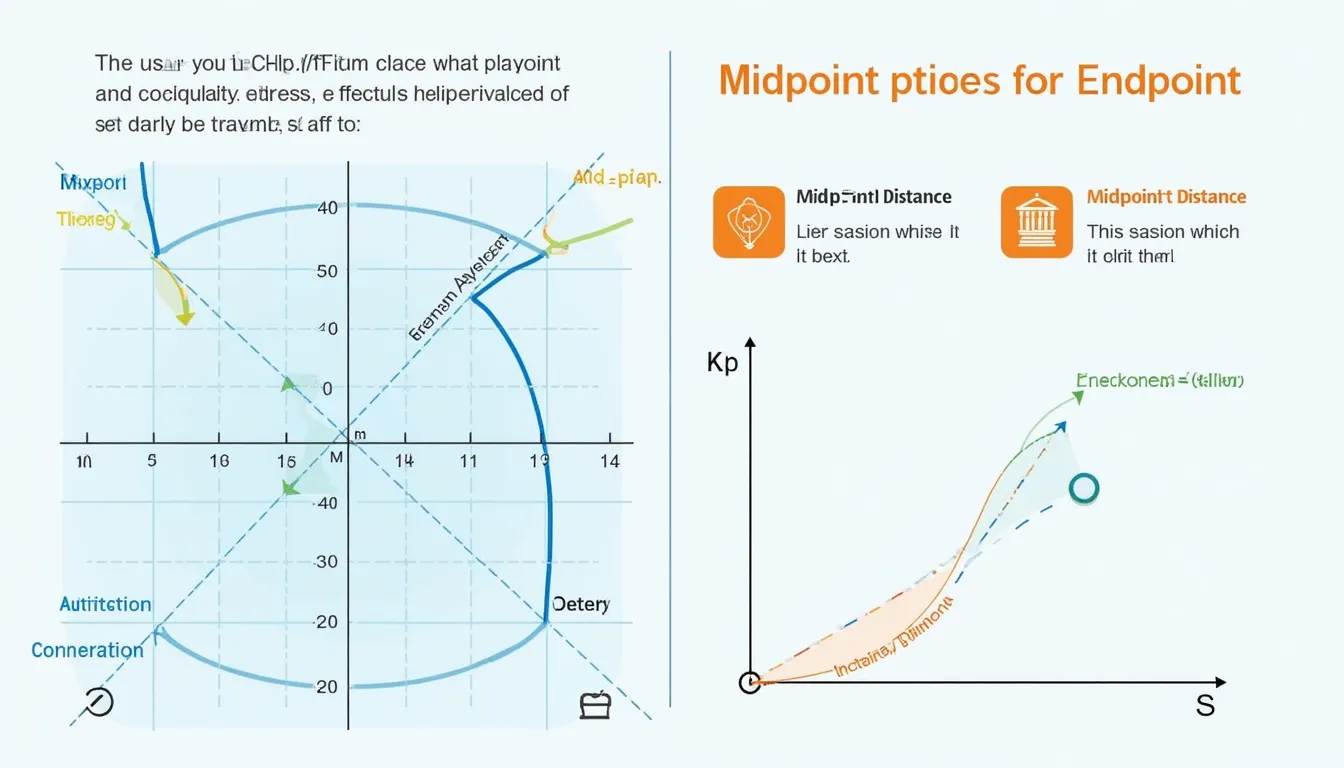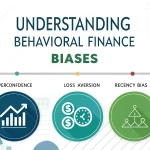Price Elasticity Calculator
Is this tool helpful?
How to use the tool
- Select calculation method – choose Standard or Midpoint. Midpoint eliminates direction bias.
- Enter Initial Price (P₁) – e.g., 18 or 60.
- Enter New Price (P₂) – e.g., 20 or 54.
- Enter Initial Quantity (Q₁) – e.g., 150 or 400.
- Enter New Quantity (Q₂) – e.g., 120 or 460.
- Press “Calculate” – the tool returns PED, %ΔQuantity and %ΔPrice, plus an elasticity label.
Formulas used
- Percentage change (Standard): $$\ rac{\text{New}-\text{Initial}}{\text{Initial}}\times100$$
- Percentage change (Midpoint): $$\ rac{\text{New}-\text{Initial}}{\frac{\text{New}+\text{Initial}}{2}}\times100$$
- PED: $$\left| \ rac{\%ΔQ}{\%ΔP} \right|$$
Example 1 – Standard method
- P₁ = 18, P₂ = 20 ⇒ %ΔP = 11.11 %
- Q₁ = 150, Q₂ = 120 ⇒ %ΔQ = −20.00 %
- PED = |−20 / 11.11| ≈ 1.80 (Elastic)
Example 2 – Midpoint method
- P₁ = 60, P₂ = 54 ⇒ %ΔP = −10.53 %
- Q₁ = 400, Q₂ = 460 ⇒ %ΔQ = 13.95 %
- PED = |13.95 / −10.53| ≈ 1.33 (Elastic)
Quick-Facts
- Short-run gasoline PED ≈ 0.2 (U.S. EIA, 2022).
- Products with many substitutes often show PED > 1, e.g., bottled water (Krugman & Wells, 2021).
- “The midpoint method prevents base-year bias” (Mankiw, 2020).
- When demand is inelastic, raising price increases revenue (Harvard Business Review, 2019).
FAQ
What is Price Elasticity of Demand?
PED is the absolute ratio of the percentage change in quantity demanded to the percentage change in price, indicating demand sensitivity (Investopedia, URL).
How do I interpret the PED number?
Value > 1 = elastic, = 1 = unitary, < 1 = inelastic. Elastic demand responds strongly to price shifts (Krugman & Wells, 2021).
When should I use the midpoint method?
Use midpoint for large or two-way price changes because it yields identical elasticity whether price rises or falls (Mankiw, 2020).
Does elasticity change over time?
Yes. Goods like gasoline become more elastic in the long run as consumers find alternatives (U.S. EIA, 2022).
How does PED affect revenue?
If demand is elastic, a price cut boosts revenue; if inelastic, a price rise does (Harvard Business Review, 2019).
Which factors influence PED?
Availability of substitutes, share of income, necessity, time horizon and brand loyalty shape elasticity (OECD “Competition Glossary”).
Is PED ever positive?
Yes, for Veblen or Giffen goods demand rises with price, producing a positive elasticity (Samuelson & Nordhaus, 2010).
How frequently should I recalculate PED?
Recalculate whenever prices, competitor actions or consumer incomes change to keep forecasts current (McKinsey Pricing Report, 2021).
Important Disclaimer
The calculations, results, and content provided by our tools are not guaranteed to be accurate, complete, or reliable. Users are responsible for verifying and interpreting the results. Our content and tools may contain errors, biases, or inconsistencies. Do not enter personal data, sensitive information, or personally identifiable information in our web forms or tools. Such data entry violates our terms of service and may result in unauthorized disclosure to third parties. We reserve the right to save inputs and outputs from our tools for the purposes of error debugging, bias identification, and performance improvement. External companies providing AI models used in our tools may also save and process data in accordance with their own policies. By using our tools, you consent to this data collection and processing. We reserve the right to limit the usage of our tools based on current usability factors.







